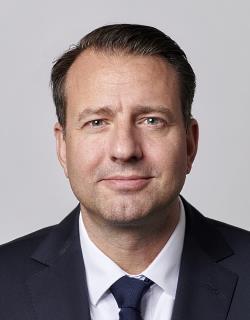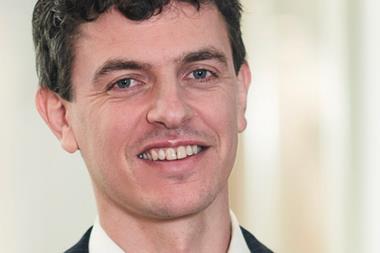The indictment of a former portfolio manager at the St. Gallen Pensionskasse, publicly accused by the attorney general of insider trading, has put into the spotlight the question of checks and balances, and the mechanism to control investment management activities at Swiss pension funds.
The action of the employee, who worked both at the treasury of the canton of St. Gallen and its Pensionskasse for a period stretching 15 years, responsible for the investment strategy of the fund he managed, is rising a pressing question of how quickly malpractices, potentially damaging for pension funds and their members, can be detected.
“It isn’t easy to monitor the behaviour of employees and to ensure that a portfolio manager does not carry out unauthorised transactions privately,” said Philipp Weber, head investment consulting at Mercer Switzerland.
However, he added, a pension fund with its own portfolio management is also responsible for maintaining an effective ICS (internal control system), which prevents such cases as far as possible from happening.
Misconducts at public pension funds, precisely because of their relevance to the wider public, might surface more than those happening in private pension funds.
Public pension funds rely on internal asset management more than private pension funds due to the larger amount of pension assets, with mandates managed by the employees of the pension fund.
“A professional investment process requires a separation of powers between the investment decision, implementation and monitoring of the investment activity,” said Oliver Kunkel, partner at consultancy PPCmetrics.
He added: “It is crucial that the strategic decision (selection of investment categories) is made independently from the asset management.”
In practice PPCmetrics often observes that internal asset managers also act as a contact person for the management bodies of the pension fund.
“With internal asset management it is therefore more challenging to ensure the separation of responsibilities and control required from a corporate governance perspective,” Kunkel said, adding that an internal employee of the pension fund taking on different tasks may create synergies, but also potentially conflicts of interest.
A healthy mechanism of internal management at pension funds requires a functioning internal risk management and compliance system – as it is also required for external asset managers – and external, independent investment management which enables a meaningful peer group comparison, both for public or private pension funds, according to Kunkel.

“Our market overview shows that the large pension funds have acknowledged these requirements and have steadily expanded their internal resources in recent years,” he said.
Heinz Rothacher, chief executive officer at Complementa, separates the process of selecting external managers, which is robust and systematic, usually monitored, conducted by processing data, and technical governance standards required in asset management, from the selection of internal managers sometimes organised differently.
“With an internal asset management solution, the obligation to monitor lies with the investor. The experience shows that trust in employees is not enough to manage conflicts of interest. This must be adequately addressed at management level,” Rothacher said.
The Pensionskassen have to make sure that internal and external selection processes are carried out with the same level of diligence and monitoring of portfolio managers, for example with regard to front/parallel running, exploitation of insider knowledge, remains central in the interests of investors and members of the pension funds, he added.
For Weber, larger pension funds with more complex organisations are likely to be more attractive targets for criminals, as practices such as front running which require a certain volume of assets.
The interdependence between the employer’s businesses and the pension funds can, under certain circumstances, make monitoring more difficult from an organisational point of view.
“Experienced senior employer representatives in private pension funds may be in a better position to effectively control the management and the service providers of the pension fund,” he said.
An established mechanism
The majority of pension funds in Switzerland now rely on investment consultants to drive the process of selecting portfolio managers, from the definition of the universe of providers to the proposal for a mandate.
“In the evaluation, the consultants look at scorecards, which are based, for example, on the ‘5 P’ approach: people, process, portfolio, performance, price,” Weber said.
Overall this approach works well, particularly in the case of traditional investments and asset classes, but in some cases Mercer observes dysfunctional approaches because not all advisers have the necessary knowledge for a specific investment category.
“This can have a negative impact on the selection process, for example if irrelevant or less relevant attributes are evaluated and, on the other hand, relevant attributes are not taken into account,” he said.
The scope of the attributes required leads sometimes to a disproportionate effort without added value for the investor, and this in turn can lead to good managers not taking part in the selection process.

In other cases, Weber added, the focus is on the evaluation of less meaningful quantitative attributes, leading to incorrect decisions.
“Pension funds rely heavily on historical track records, and forward-looking criteria for evaluating the outperformance portfolios are instead neglected. Many investment consultants also do not have the necessary resources to cover the universe of managers and are therefore unable to ensure a sufficient best-in-class selection,” Weber said.
Focusing primarily on the price when selecting an investment consultant can also lead to using an overly superficial approach; for example in the case of an indexed mandate, the costs but also other factors relevant to returns should be the subject of a thorough analysis, he explained.
“In some cases it is also particularly important to have an additional, extensive operational due diligence carried out by a specialised team. This allows operational and legal risks to be minimize,” Weber added.
An investment controlling structure, independent from the asset management, has established itself in Switzerland for many years, according to Kunkel.
“This provides independent reporting, analysis and interpretation of investment activity, so that the board of trustees and the investment committee identify organisational weaknesses and deficiencies in the processes and need for action,” he said.
PPCmetrics has noticed that most pension funds have established a high level of investment controlling and manager monitoring, working with an independent custodian bank, global custodian and an internal or external investment controller.
“There is room for improvement in re-tendering asset management mandates or at least the fees periodically, for example every five to 10 years, as it is also stipulated in public procurement law. This ensures that all mandates awarded are in line with the market in terms of quality and costs,” he said.
Rules
The law on occupational pensions (BVV 2) regulates the governance of pension funds, instructing to check on the integrity and loyalty of those with responsibilities, and to asset mangers to disclose their interests to boards of trustees on an annual basis.
External asset managers should not be represented in boards of trustees of pension funds to avoid conflicts of interest. The norms prohibit front/parallel/after running, trading securities or investing if the institution is trading in that security or investment and if the pension institution may suffer as a result.
However, the rules seem in certain cases too inaccurate or difficult to implement in practice, according to Rothacher.

“The supreme body of the pension fund [board of trustees] determines the organisation of the Pensionskasse. The law does not envisage a sporadic review of the organisational structures, or details of how employees deal with their own transactions, apart from pointing out possible conflicts of interest,” he said.
The supervision of the management is explicitly prescribed by the law, but unfortunately not in detail and even with more rules it is still up to the board of trustees to implement effective governance and control mechanisms to deal with conflicts of interests, he added.
An exception with consequences?
The alleged insider trading activity at the St. Gallen Pensionskasse seems an exception where governance mechanisms have abdicated, other cases have not surfaced to the public so far.
“Apparently, the accounts of the employee and custody accounts [at the St. Gallen Pensionskasse] were not monitored systematically and to a sufficient extent. In this specific case, there was apparently too little clarity as far as monitoring is concerned,” Rothacher said.
This case may lead to adjusting certain aspects in relevant laws, but since the confidentiality of bank clients prevails in Switzerland, an employee can conceal his transactions well or, as in the case of the St. Gallen Pensionskasse, even conceal it from the tax authorities. How is it possible to take action without information?,” Roathcher questioned.
Pension funds may tackle governance issues in asset management by keeping records and monitoring internal portfolio managers vis-à-vis the supervisory authority, proving if the measures are effective.
“This would help those responsible for the pension funds to better address these situations. Another general approach would be, for example, to force banks to undergo a special inspection with regard to transactions on the deposits and accounts of the employees of the pension funds making investments. There is obviously a gap on this,” Rothacher said.
Various legal cases show that in many cases internal control systems are not up to the complexity and scope of the investment organisation, according to Weber.
Governance means not only avoiding criminal misconduct, but also ensuring for example that investments are sufficiently diversified and can generate a higher risk-adjusted return for beneficiaries in the long-term, he said.
The distribution of responsibilities within a pension fund should also take into account time and human resources available.
“In practice, however, many pension funds state that their decision-making processes for some of these tasks are far too long. Long meetings and the limited time that can be spent on investment topics in many committees limit the scope for action, and can mean that diversification and return potential cannot be sufficiently exploited,” Weber said.
The commitment to delegate asset or portfolio managers decisions makes it easier to pursue a disciplined best-in-class approach without a direct link between the asset managers and the pension fund.
“In many cases, delegation can adopt best practices in the area of governance and reduce operational and legal risks. The reputational risk is also generally lower when delegating to a well-known asset manager,” Weber said.
Read the digital edition of IPE’s latest magazine





































No comments yet